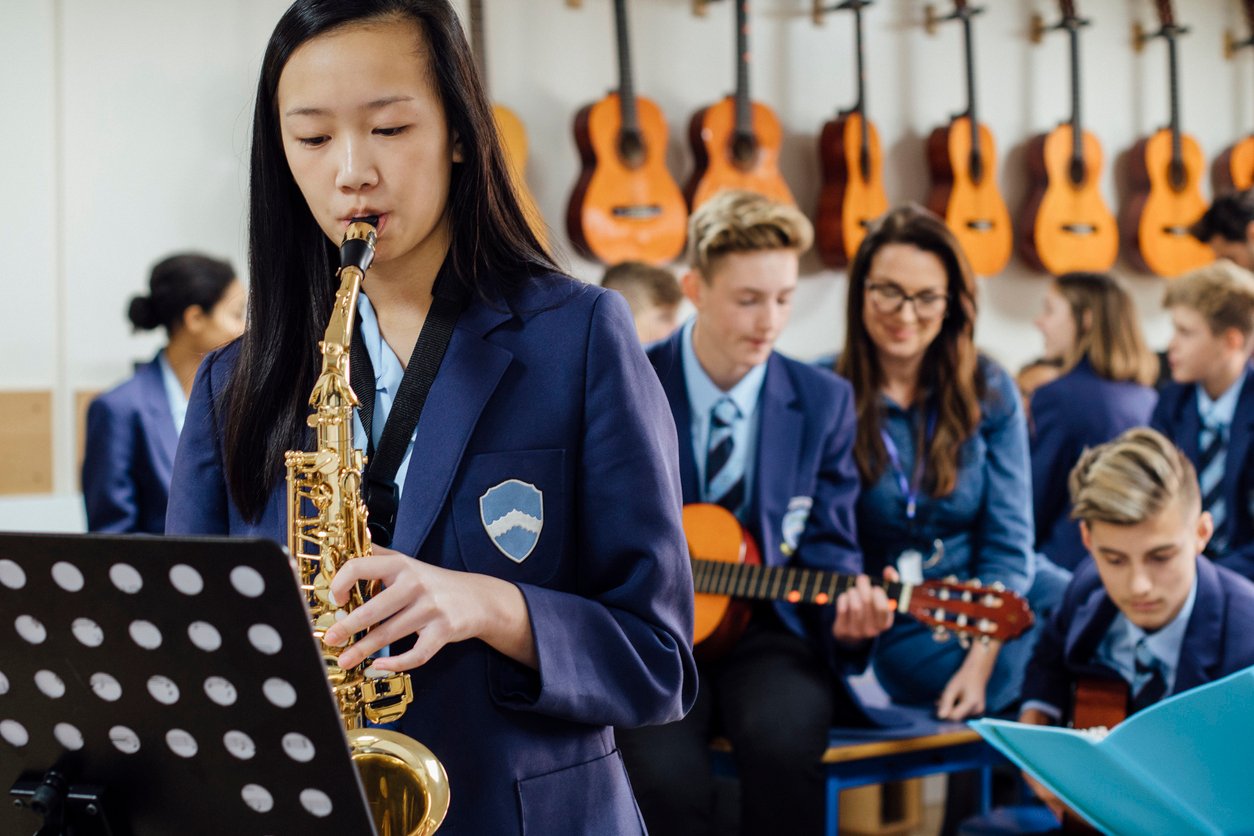
Photo: DGLimages
Entries to creative A-levels fall again
Sector leaders reignite call for educational reforms as entries to exams in creative subjects make up just over 10% of all A-levels.
Some creative subjects experienced a record low in the number of students sitting A-level exams this summer, according to exam results data published by the Joint Council of Qualifications.
In total, 1,154 fewer students chose to sit exams in seven creative subjects in 2023 than in 2022 – a decrease of 1.2% on last year. Those subjects were: art and design, design and technology, drama, media, film and television studies, music and performing and expressive arts.
While the number of A-level entries to creative subjects remains 0.9% higher than in 2019, the percentage of all A-levels being studied in a creative subject was lower this year than it has ever been.
READ MORE:
Despite a 2.2% increase in the number of exam entries across all A-level subjects this year, just 10.7% of total entries were in creative subjects in 2023, compared to 11.1% in 2022 and 11.5% in 2019.
Almost all creative subjects saw a year-on-year decline in exam entries, but the largest drop was in performing and expressive arts, where student numbers fell from 1,380 to 1,203 – a fall of 14.7%.
Entries in music fell from 5,916 to 5,493 – a drop of 7.2% and a record low. And the number of drama students fell by 5.6%, while design and technology attracted 6.2% fewer students and art and design saw a 2.7% decrease.
Media, film and television studies was the only creative subject where a greater number of students sat exams this year than in 2022, with numbers up 10.2% year on year.
‘A wake-up call’
Over the longer term, entries to all creative subjects at A-level have decreased by 29% since 2010, when the English Baccalaureate (EBacc) was introduced, according to data shared by Campaign for the Arts.
Performing and expressive arts has seen the biggest decline in numbers during that period, at 68%, followed by dance (57%), music (46%), drama (45%), design and technology (43%), media, film and television studies (32%) and arts and design (7%).
Campaign for the Arts Director Jack Gamble said the further decline in arts A-levels should be “a wake-up call”.
He added: “Arts subjects have been systematically undervalued and downgraded in England's state schools over recent years.
“Government ministers say that they value cultural learning and the contribution it makes to children’s development, wellbeing and life chances. Yet they have completely excluded arts subjects from the English Baccalaureate and repeatedly failed to deliver the Arts Premium they promised to secondary schools.”
“Every child – not just those at private schools – should have the backing to pursue an arts-rich education as part of a broad and balanced curriculum”.
Responding to figures shared by Campaign for the Arts on Twitter/X, Shadow Minister for the Arts, Labour MP Barbara Keeley said “the fall in entries of arts subjects at A-level is evidence of a broader de-prioritisation of arts subjects by this Conservative government”.
She added a Labour government would “ensure that every child has access to a broad education which nurtures creativity”, as outlined in the party’s pledge for educational reforms announced in July.
‘Overwhelming’ evidence for reforms
The dramatic fall in the number of students studying music at A-level follows a pattern that is “truly devastating,” said Deborah Annetts, Chief Executive of the Independent Society of Musicians.
“The evidence is now overwhelming that the government needs to reform accountability measures in England which are marginalising arts subjects in our schools,” Annetts said.
Donald Hyslop, Chair of Trustees at CCSkills, agreed the first step in countering declining enrolment in creative subjects is to tackle the state of the arts offer in schools.
“Evidence tells us that at every stage in the schooling system the arts are disadvantaged, and this must change,” he said.
“Unlocking the full potential of our creative sector starts with fostering a passion for creative subjects and ensuring equitable access to skill development, not only via A-level routes but across all types of vocational qualifications and work-based learning.
“It’s imperative that we prioritise improved access to and take-up of creative subjects, at all stages of our education system.”
General Secretary of the National Society for Education in Art and Design, Michele Gregson, agreed government “needs to urgently look at the pressures that face young people and deter them from study”.
“For our subject, system change must start by looking at the widening equality gap. Opportunities for quality provision, curriculum time and specialist teachers, advice and guidance should not depend on who you are or where you live.”
She added students opting to study higher education courses face a portfolio admissions process that is “confusing and stressful”.
“In the absence of national portfolio agreement or guidance, students and their teachers have to navigate a labyrinth of differing portfolio requirements for each institution that they apply to,” Gregson explained.
“All this is against a government narrative that discourages progression into higher education in the creative arts. The trajectory is clear. If this trend continues, the talent pipeline, will not [meet] the needs of our creative industries – or society as a whole.”
Join the Discussion
You must be logged in to post a comment.